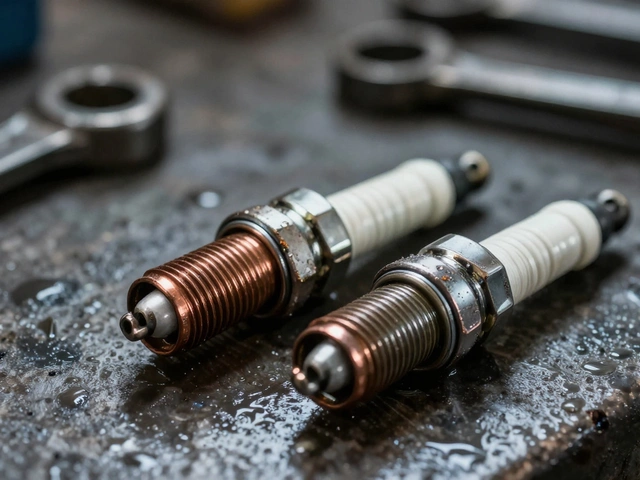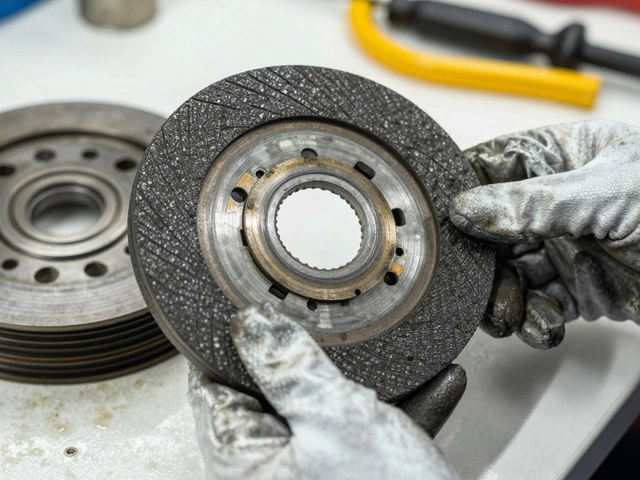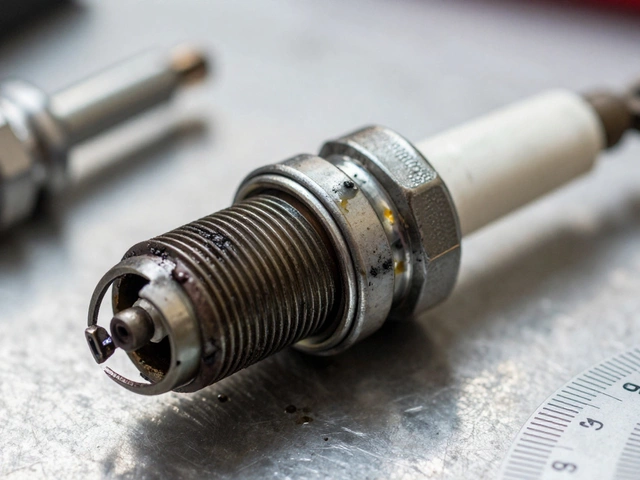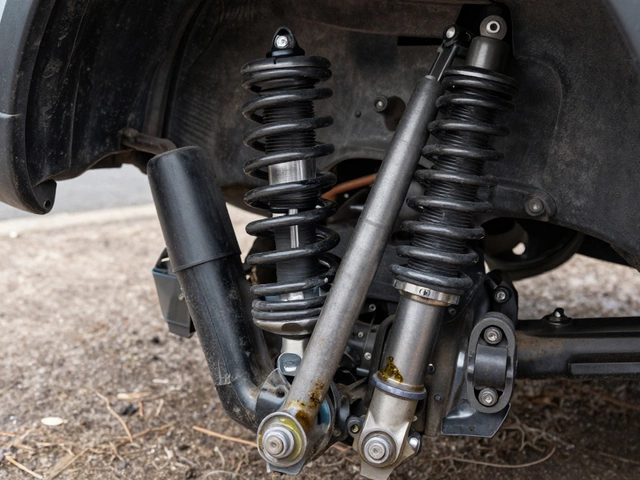Ever popped the hood and wondered just how often you need to add engine oil? If you’re like most drivers, you probably wait for the dashboard warning. But here’s the deal—waiting until that light comes on can cost you big time.
Your engine works hard every time you drive. That heat and friction slowly burn off oil, even in the healthiest cars on the road. Some newer engines use less, but don’t get too comfortable—every engine will chew through some oil sooner or later.
The trick is catching low oil before it causes any trouble. Not enough oil means more wear and tear. You might not notice it right away, but over time, the damage can sneak up and turn into serious engine problems.
- Why Engine Oil Levels Drop
- How to Check Your Oil Properly
- When Should You Top Up Your Oil?
- Tips to Prevent Frequent Top-Ups
Why Engine Oil Levels Drop
Ever notice your engine oil level shrinking between oil changes? You’re not alone. Modern engines are better than ever, but even in great shape, oil doesn’t stay at the same mark forever. There are some pretty normal—and some not-so-normal—reasons for this.
- Burn-off: A hot engine is always burning a bit of oil, especially if you take lots of short trips. Engines running at higher RPMs, like on highways, also burn more. A small amount is expected, but if you're topping up every few weeks, something's up.
- Small leaks: You might not spot a puddle under your car, but slow leaks from gaskets or seals are super common. Even brand-new cars sometimes develop them. These leaks add up, even if you never see visible drops.
- Worn piston rings or valve seals: If your ride has a few years or miles on it, the internal parts that are supposed to keep oil inside the engine may start to wear out. When that happens, some oil sneaks into the combustion chamber and burns away, leading to faster oil loss.
- Poor quality or old oil: Oil gets thinner and breaks down over time, especially if you push oil changes past their due date. Thin oil slips past seals easier and doesn’t protect the engine as well—a double whammy for oil level and engine health.
- Turbochargers: Got a turbo engine? Those little snails spin insanely fast and run hotter than most engines, so they use more oil. It’s totally normal to top up more between changes with a turbo car.
Check out this quick look at how much oil loss is considered normal by some auto manufacturers for different engines:
| Engine Type | Normal Oil Loss (per 1,000 miles) |
|---|---|
| Small 4-cylinder (non-turbo) | 0.2 - 0.5 quarts |
| High-performance V8 | 0.5 - 1.0 quarts |
| Turbocharged 4-cylinder | 0.5 - 1.0 quarts |
So, if you notice your oil dropping faster than these numbers, it’s time to give your car a closer look. Ignoring it for too long is a gamble you don’t want to take.
How to Check Your Oil Properly
Checking your engine oil the right way keeps your car running smooth and helps you catch small problems before they become big nightmares. Most folks just pop the hood and pull the dipstick, but there are a few things you’ve got to get right if you want real answers.
- Let your car cool for about ten minutes after you turn it off. Checking right after driving makes the oil spread around, which can mess with your reading.
- Open the hood and look for the dipstick. It's usually got a yellow or orange handle near the front or side of the engine.
- Pull out the dipstick and wipe it clean with a rag or paper towel. Pop it back in all the way, then pull it out again to check the oil levels.
- Check the markings—most dipsticks have lines for “min” and “max.” Your goal is to be closer to max, but never over it. If the oil’s below the min mark, it’s definitely time for a top-up.
- Pay attention to the oil’s look and smell. If it’s black, gritty, or smells burnt, it’s due for a change, not just a top-up.
Doing this every month or every 1,000 miles for older cars (or every couple of months for newer cars) keeps you in the know. According to a 2023 survey by AAA, over 20% of drivers run low on oil without realizing it, which can wreck their engine oil system faster than you'd think.
If you’re not sure where your dipstick is or how to read it, most owner’s manuals have pictures—easiest way to make sure you’re poking around in the right spot.

When Should You Top Up Your Oil?
Figuring out the right time to add engine oil isn’t rocket science, but it’s one of those things that can easily slip your mind. Most car makers say you should check your oil at least once a month, though some newer cars can go a bit longer, thanks to better tech. But stats don’t lie—about 1 in 5 cars run low on oil just because the driver forgets to look.
The real answer? Top up your oil whenever the dipstick shows the level is below halfway between the "min" and "max" marks. If it’s right at the minimum line—or below it—pull out your oil and get pouring right away. And by the way, that warning light? That’s a last-ditch alert, not a polite reminder. If the light’s on, you’re already running low, and it’s time to act fast.
- Check your oil at least once a month, or before long road trips.
- Let your engine cool for a few minutes before checking, so you get an accurate read.
- If the oil looks dirty or gritty, don’t just top up—think about a full oil change.
- Always use the same type and grade of engine oil shown in your car’s manual.
How much oil should you add when topping up? Usually, it takes about one quart (or one liter) to move the dipstick from the minimum to the maximum line. Don’t overdo it; too much oil is almost as risky as too little.
| Oil Level Situation | Action |
|---|---|
| Above halfway | No top-up needed |
| Between min & max | Add oil if closer to min |
| At min line | Top up oil right away |
| Below min | Top up immediately and check for leaks |
Don’t forget, if you keep topping up oil way too often, it might mean your engine is leaking or burning more oil than it should. Keep an eye on it. Regular checks keep your car maintenance simple, and your engine running strong.
Tips to Prevent Frequent Top-Ups
If you’re tired of constantly having to top up your engine oil, it’s time for a strategy change. Most oil loss isn’t magic—it’s about how your car is used and taken care of. Here are some simple things you can do to stretch the time between oil top-ups.
- Stick to the right oil type and grade. Your car’s manual isn’t just for show. Using the exact oil specified for your engine means less burning and fewer leaks. Thinner oils aren’t always better—use what’s on the cap or in the book.
- Keep your engine healthy. Worn-out piston rings or gaskets are often to blame for oil loss, so don’t ignore weird smells, smoke, or drops of oil under your car. Fix small leaks before they become oil guzzlers.
- Drive smoother and avoid heavy acceleration. Revving the engine hard all the time literally burns oil faster, especially on older cars. Quick starts and long idling speed up the oil disappearing act.
- Stay on top of oil change intervals. Old, dirty oil burns off easier and doesn't protect your engine as well. Fresh oil not only lasts longer, but you’ll get a heads-up on leaks or other problems when you change it out regularly.
- Let the engine warm up before pushing it. Cold engines don’t seal as well, so more oil can sneak out past the rings or valves if you hammer the gas right away. Give it a minute or two on cold mornings.
Here’s a quick look at common things that speed up oil top-up frequency compared to regular habits. Real-world habits make a difference:
| Habit | Average Oil Used per 1,000 Miles |
|---|---|
| Gentle driving | ~0.3 quarts |
| Frequent hard acceleration | Up to 1 quart |
| Ignoring small leaks | 1+ quarts |
Use these simple tricks to keep your car maintenance under control, and you’ll need fewer engine oil top-ups in the long run. Not only does it save money, but your engine will thank you with fewer breakdowns and less hassle.








